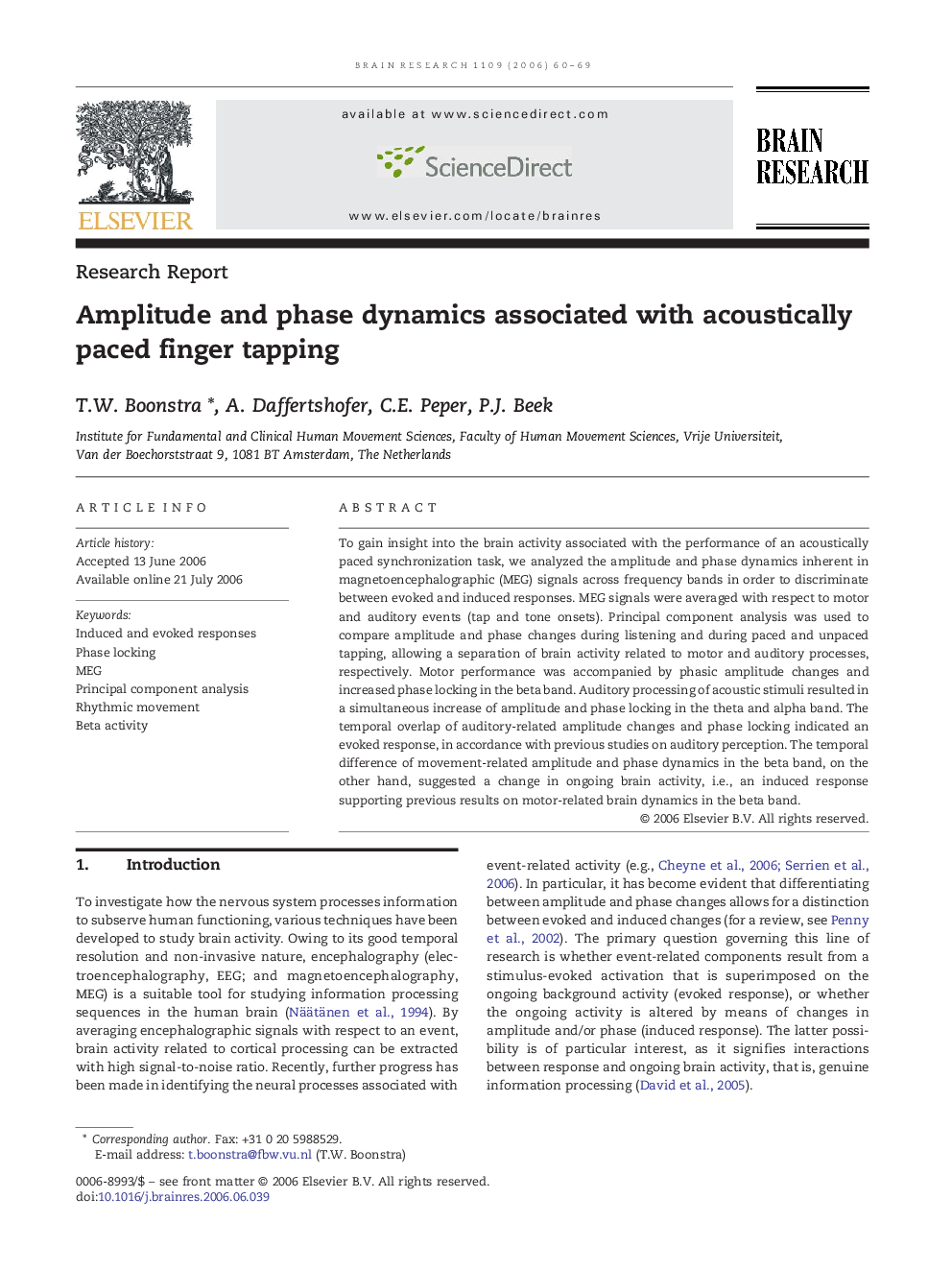| Article ID | Journal | Published Year | Pages | File Type |
|---|---|---|---|---|
| 4332321 | Brain Research | 2006 | 10 Pages |
Abstract
To gain insight into the brain activity associated with the performance of an acoustically paced synchronization task, we analyzed the amplitude and phase dynamics inherent in magnetoencephalographic (MEG) signals across frequency bands in order to discriminate between evoked and induced responses. MEG signals were averaged with respect to motor and auditory events (tap and tone onsets). Principal component analysis was used to compare amplitude and phase changes during listening and during paced and unpaced tapping, allowing a separation of brain activity related to motor and auditory processes, respectively. Motor performance was accompanied by phasic amplitude changes and increased phase locking in the beta band. Auditory processing of acoustic stimuli resulted in a simultaneous increase of amplitude and phase locking in the theta and alpha band. The temporal overlap of auditory-related amplitude changes and phase locking indicated an evoked response, in accordance with previous studies on auditory perception. The temporal difference of movement-related amplitude and phase dynamics in the beta band, on the other hand, suggested a change in ongoing brain activity, i.e., an induced response supporting previous results on motor-related brain dynamics in the beta band.
Related Topics
Life Sciences
Neuroscience
Neuroscience (General)
Authors
T.W. Boonstra, A. Daffertshofer, C.E. Peper, P.J. Beek,
